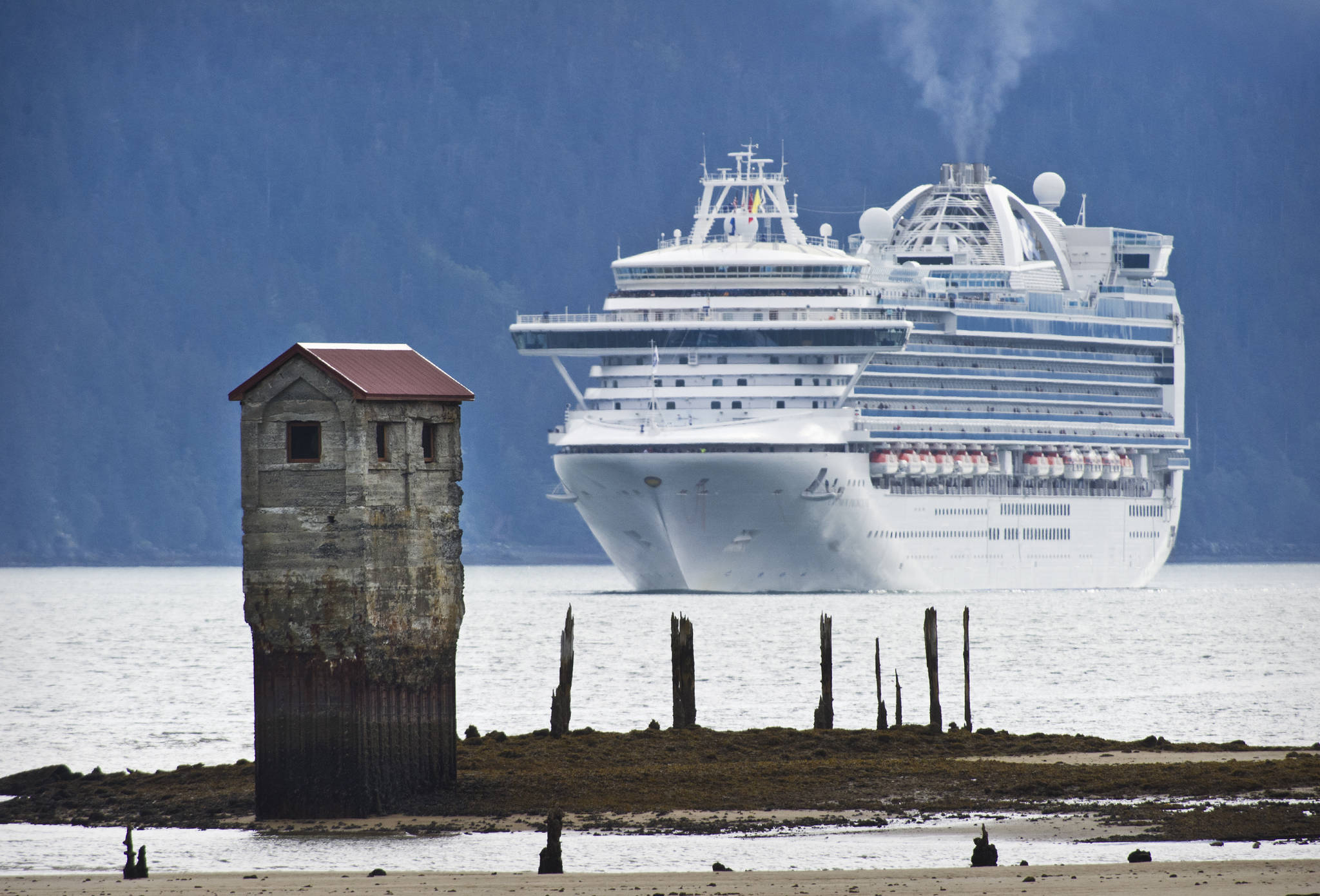Complaints about cruise ship emissions and violations are both on track for year-over-year decreases, according to numbers from the Alaska Department of Environmental Conservation.
As of Thursday, there had been 46 air complaints from communities throughout the state shared with the DEC, which is down from the 83 that had been received through Aug. 8 last year, said Laura Achee, public information officer for the DEC, in an email. That’s about a 45 percent decrease.
Last year, a record 152 complaints were received, according to the annual Cruise Ship Air Compliance Report. In 2017, there were 71 complaints, none in 2016, four in 2015 and 23 in 2014.
The decrease in complaints from last year jibes with what Juneau Assembly member Michelle Bonnet Hale is seeing, but the tourist season didn’t start off in a promising way.
[Small town, big ships: More cruise ships headed to Hoonah]
At a June Assembly meeting, Hale suggested sending a letter to the president of Norwegian Cruise Line Holding regarding visible pollution. She said things seem to have turned a corner in the ensuing months.
“I think the cruise ships have been doing remarkably well this summer,” Hale said. “For the most part, I think they really recognized that last year was a problem. I’m impressed with what we’re seeing. I think they heard Juneau.”
Kirby Day, coordinator for Tourism Best Management Practices and port manager for Holland America Group, said in an email that TBMP has also seen a decrease in complaint calls. Through the end of July, its hotline received two emissions-related calls compared to six last year.
John Binkley, president of Cruise Lines International Association Alaska, said in an email that reduced emissions complaints and violations are the result of hard work.
“We are pleased to see the positive results both with regulatory and public observations,” Binkley said. “To address some unique challenges in Juneau, our members committed to reduce time holding in the harbor on multiple engines and have implemented a fuel management program prior to entering the harbor. These initiatives are part of the industry’s commitment to sustainable operations.”
Violations seem to be down, too, according to notices of violations issued this cruise ship season. So far, there have been three notices of violation issued, which is down from seven as of Aug. 8 last year, Achee said.
Last year, nine notices of violation were issued.
So far this season, The Norwegian Joy was issued a notice of violation on June 7, for an occurrence on May 21 in Juneau. The Oceania Regatta was issued a notice July 15 for a June 1 occurrence in Sitka and the Royal Princess was issued a notice on July 15 for a May 29 occurrence in Skagway.
Achee said every violation was air emission-related.
The three individual ships involved in violation were not among the ones penalized last year. However, some of the cruise lines were repeat violators and have been in the news for reasons related to environmental concerns.
Both Norwegian Cruise Line Holding and Princess Cruise Line were penalized last year, according to the annual Cruise Ship Air Compliance Report.
[Juneau to have first ambient air study in over a decade]
Princess Cruise Lines and its parent company, Carnival Cruise Lines, pleaded guilty to violations this year and were ordered to pay a $20 million penalty, according to the United States Department of Justice. That penalty was related to illegal dumping and other environmental violations.
Two notices of violation were issued after Aug. 8 last year, and Achee said additional violations from earlier this year are under investigation. The DEC would not release information about possible violations or enforcement action until a notice has been issued.
Fewer complaints and violations are not tied to fewer air-quality tests. So far, DEC and its contractors are on pace to produce about the same number of opacity readings in 2019 as in 2018, Achee said.
Monitors at cruise docks throughout the state measure emissions coming from a ship’s exhaust stack with a visual test of opacity. If emissions are see-through, they’re likely clean; if they’re opaque, they may contain pollution.
Research shows that 20 percent opaque emissions could contain particulates harmful to humans or the environment, according to a collaborative study prepared for the Environmental Protection Agency.
This year, there have been 132 opacity readings conducted by contractors in Juneau, 127 in Ketchikan and 49 at other Alaska ports. The DEC has conducted one reading in Juneau, four in Ketchikan and 33 in other ports.
That adds up to 346 readings. Last year, 480 readings were performed, according to the annual Cruise Ship Air Compliance Report.
“The number of port visits have not decreased compared to 2018,” Day said. “Through June 30 of 2019, there were 213 large ship visits compared to 211 over the same period in 2018. The ships have put in place fuel and engine management programs to better monitor and minimize visible emissions. Overall, we welcome these efforts to improve.”
• Contact reporter Ben Hohenstatt at (907)523-2243 or bhohenstatt@juneauempire.com. Follow him on Twitter at @BenHohenstatt.

